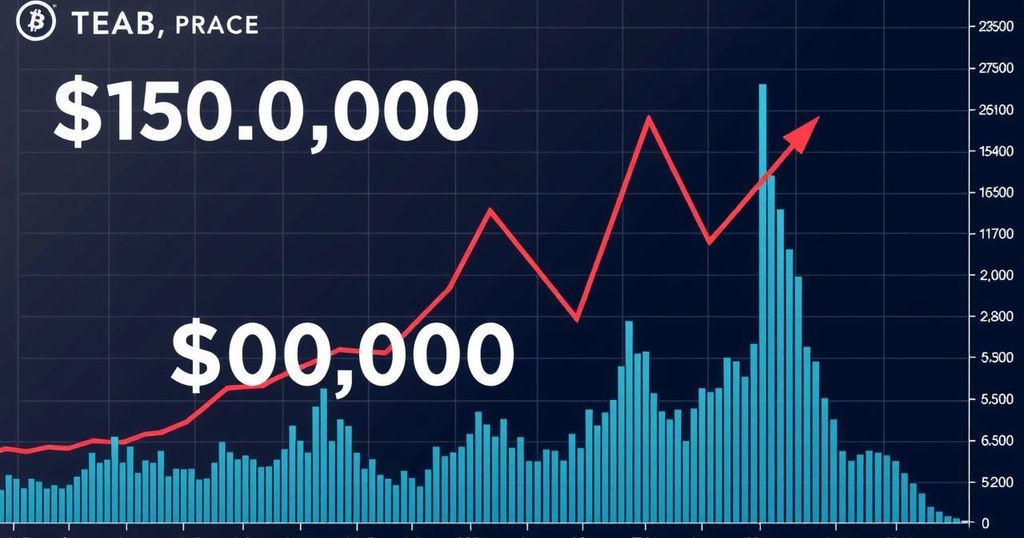Bitcoin Price Faces $20K Risk: Key Influencing Factors This Week
Bitcoin is facing potential downward movement this week due to bearish patterns, liquidity issues, macroeconomic influences, and negative market sentiment. Analysts warn of a potential $20,000 drop, although long-term investors may see opportunities for accumulation. Current trading conditions reflect significant volatility risks as the year-end approaches.
As Christmas week commences, Bitcoin (BTC) finds itself at a critical crossroads. Analysts express concerns of a significant price drop as support levels weaken. BTC/USD has fallen well below the pivotal $100,000 psychological barrier, generating a bearish outlook across the cryptocurrency market. Five essential factors influencing Bitcoin’s price trajectory this week include bearish technical patterns, liquidity issues during the holiday season, macroeconomic influences, opportunities for long-term investors, and prevailing market sentiment.
First, Bitcoin’s closure last week resulted in a “bearish engulfing” candlestick formation, indicating a risk of downward movement. Analyst Rekt Capital noted that the asset has breached its weekly support, disrupting a five-week uptrend. He stated, “Bitcoin is transitioning into a multi-week correction,” suggesting that previously established support levels might convert into resistance.
Second, the holiday season often leads to diminished market participation, raising concerns of volatility. Analyst Mark Cullen observed the existence of considerable liquidity at $115,000 on the upside and below $80,000 on the downside, speculating about possible price swings during this festive period.
Third, the macroeconomic landscape, particularly the Federal Reserve’s recent hawkish stance despite a minor rate cut, creates additional pressure on risk assets, including Bitcoin. The Fed’s outlook for curbed rate cuts in 2025, combined with a notable decline in the global money supply, exacerbates liquidity issues. According to The Kobeissi Letter, “If the relationship holds, Bitcoin could see a $20,000 drop over the next few weeks,” referencing historical patterns linking money supply fluctuations to Bitcoin’s price.
Additionally, despite the current bearish sentiment, long-term investors might find attractive entry points. The Smart DCA tool from CryptoQuant points out that Bitcoin’s trading price of $95,000 is below its short-term realized price, suggesting potential buying opportunities. Darkfost from CryptoQuant remarked, “This is a prudent approach to mitigate volatility risks.”
Finally, market sentiment is at its lowest this year, as reported by Santiment, with the highest level of fear also known as FUD observed on social media platforms. The prevailing negativity does not always foretell further declines; historical trends demonstrate that such sentiments often precede market recoveries. Santiment commented, “Markets tend to move opposite to retail expectations.”
Currently, Bitcoin is priced in the mid-$90,000 vicinity, subjected to various technical, macroeconomic, and sentiment-related pressures. While long-term holders may view this as a strategic buying moment, the potential for short-term volatility looms, with prices possibly plunging to $80,000 or below before establishing a new stability level.
The recent fluctuations in Bitcoin’s price highlight the intricate dynamics present in the cryptocurrency market, driven by a variety of factors including investor psychology, technical analysis, liquidity conditions, and macroeconomic policies. Analysts closely monitor bullish and bearish signals generated by candlestick patterns, liquidity trends driven by seasonal market activity, and the potential influence of major economic indicators, such as those set by central banks. Learning the sentiment trends and liquidity levels can help predict the potential directions in which Bitcoin and other cryptocurrencies might move.
In summary, Bitcoin’s prospects for the coming week hinge on a blend of bearish technical signals, liquidity challenges due to the holiday, macroeconomic implications from the Federal Reserve’s policies, the allure of strategic buying for long-term investors, and prevailing negative sentiment. As market participants await key developments and liquidity trends heading towards year-end, caution is advised for short-term traders, while long-term investors may find value in the current price actions.
Original Source: www.binance.com








Post Comment